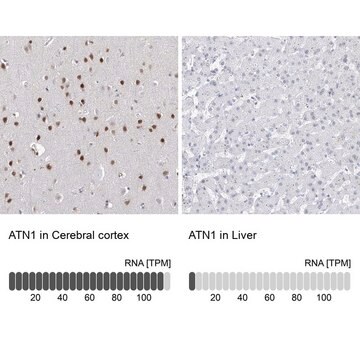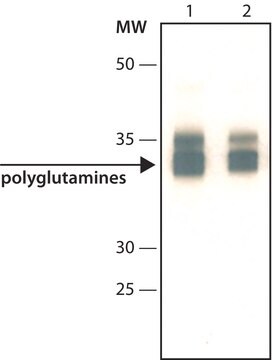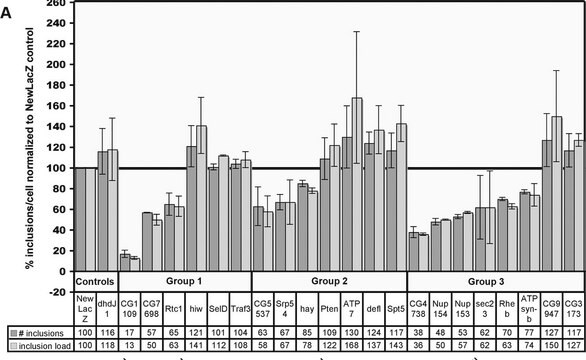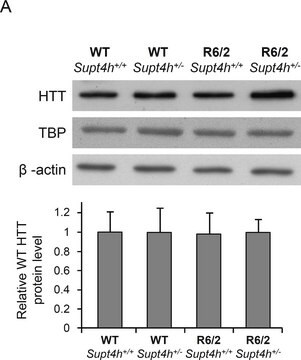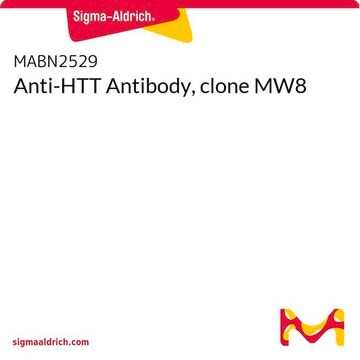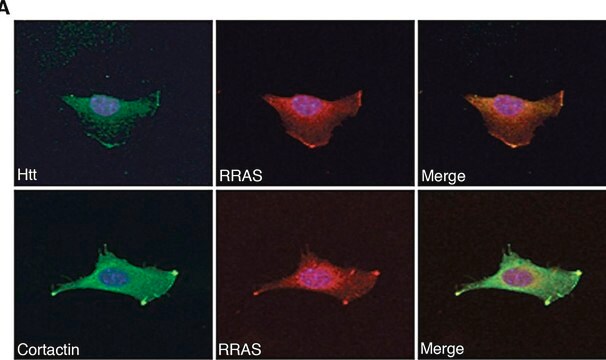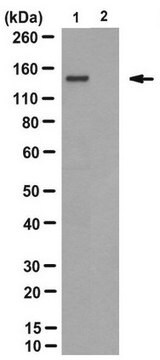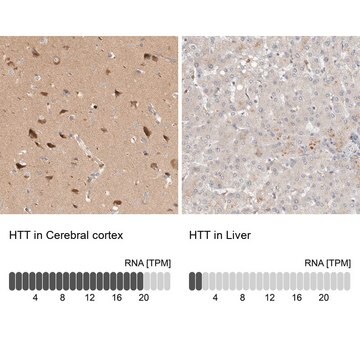MABN2427
Anti-polyQ specific Antibody, clone MW1
clone MW1, from mouse
Sinónimos:
Htt mutant, PolyQ-Htt, Clone MW1, Atrophin-1
About This Item
Productos recomendados
origen biológico
mouse
Nivel de calidad
forma del anticuerpo
purified immunoglobulin
tipo de anticuerpo
primary antibodies
clon
MW1, monoclonal
reactividad de especies
mouse, rat, human
envase
antibody small pack of 25 μg
técnicas
immunocytochemistry: suitable
immunohistochemistry: suitable
western blot: suitable
isotipo
IgG2b
Nº de acceso NCBI
Nº de acceso UniProt
Condiciones de envío
ambient
modificación del objetivo postraduccional
unmodified
Información sobre el gen
human ... ATN1(1822)
Descripción general
Especificidad
Inmunógeno
Aplicación
Neuroscience
Immunohistochemistry Analysis: A representative lot detected expanded polyQ repeats in Immunohistochemistry applications (Ko, J., et. al. (2001). Brain Res Bull. 56(3-4):319-29).
Immunocytochemistry Analysis: A representative lot detected expanded polyQ repeats in Immunocytochemistry applications (Legleiter, J., et. al. (2009). J Biol Chem. 284(32):21647-58).
Calidad
Western Blotting Analysis: 0.5 µg/mL of this antibody detected expanded polyQ repeats in Htt in 10 µg of mouse brain tissue lysate. It does not react with normal Htt.
Descripción de destino
Forma física
Almacenamiento y estabilidad
Otras notas
Cláusula de descargo de responsabilidad
¿No encuentra el producto adecuado?
Pruebe nuestro Herramienta de selección de productos.
Clase de riesgo para el agua (WGK)
WGK 1
Certificados de análisis (COA)
Busque Certificados de análisis (COA) introduciendo el número de lote del producto. Los números de lote se encuentran en la etiqueta del producto después de las palabras «Lot» o «Batch»
¿Ya tiene este producto?
Encuentre la documentación para los productos que ha comprado recientemente en la Biblioteca de documentos.
Nuestro equipo de científicos tiene experiencia en todas las áreas de investigación: Ciencias de la vida, Ciencia de los materiales, Síntesis química, Cromatografía, Analítica y muchas otras.
Póngase en contacto con el Servicio técnico
